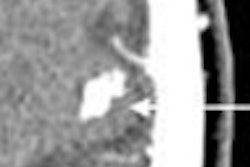While the initial capital investment required to start a PET/CT service can be a challenge -- typically around $2 million to purchase and install a single system -- with the right economic and market evaluations it can make sense from a financial perspective.
A facility's return on investment is primarily dependent on the amount of competition in its catchment area, which clearly impacts the number of PET/CT studies that can be done in a day (typically around five to break even, although this is changing with the recent reimbursement cuts; the general consensus is that it now takes seven to eight studies a day to stay afloat). Other key factors include active participation with hospital tumor boards and educating referring doctors about the advantages of PET/CT and the indications for which it is most appropriate -- and reimbursable.
"Having a PET/CT scanner, whether in hospital or outside, is really like setting up a small business," Agress said. "It requires a new level of physician education of your referring docs for PET/CT versus just PET. Sometimes they want to order a CT scan with or without contrast, and you have to explain the differences to them; sometimes they don't want CT, so you have to explain that you need it for the attenuation."
There are alternatives for those sites still testing the PET/CT waters, such as adding PET to an existing CT scanner (which is how Agress' group first started) or setting up a mobile clinic to test a market's potential. Integral PET, a company based in New York City, owns and operates about 20 PET/CT facilities across the U.S., according to Ron Lissak, president of Integral PET. Because the cost of setting up a PET/CT center can range from $1.5 million to $3 million (depending on the equipment), they often move into a new region with a mobile service first.
"This business is very much about educating the referring doctors to see how PET/CT fits in their area," Lissak said. "After a couple of years, we then will build up to a fixed site, which is less risky and gives the radiologists time to build the referral pattern."
-- Kathy Kincade



















